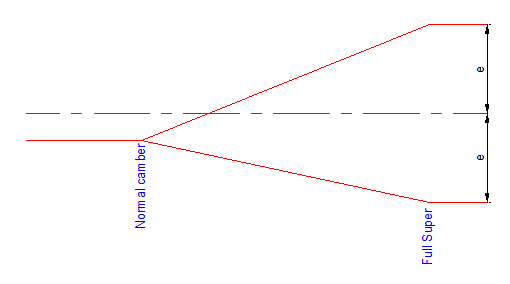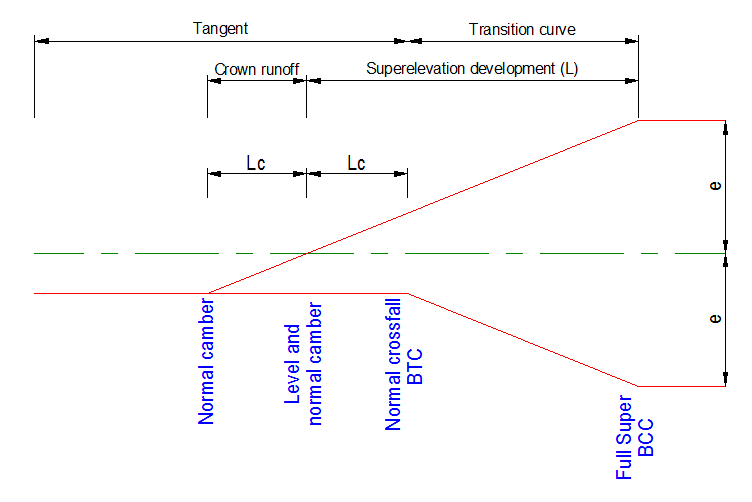
Home > Superelevation Design Process
Civil Designer automatically evaluates each horizontal curve pair, and assess whether they are single curves, reverse curves, broken-back curves, or compound curves. It then applies the design criteria and design rules stipulated here, according to the specific nature of each curve.
The super elevation rate (e) is the full rate of super elevation for a specific curve, and is read from the Superelevation rate curve.
The run-off length (L) is calculated as the difference in height between the fully superelevated carriageway edge and the axis of rotation, divided by the relative slope between them. This value is calculated by the one of the following formulas, but will always be greater than the minimum run-off length, as specified in the Super spreadsheet of the Design Criteria.
L = (w*e*s*l) / 100
where:
L = Length of superelevation run-off (m).
w = Lane width (m). This value will be read from the Edge level spreadsheet at the width break point closest to the horizontal curve. If no edge levels are available, it will be read from the first road template specified.
e = Superelevation. This value will be linearly interpolated from the Superelevation graph.
l = Lane Factor. You can specify this value on the Design Criteria.
Lc = (w*e*s*l) / 100
where:
Superelevation will be developing over the length of transition the curves, as calculated by the Horizontal Alignment routine such that:
Lt = V3 / (46.7 * q * R)
where:
Bear in mind that the grade of the carriageway edge profile cannot vary more than 0.5% from the line about which the carriageway pivots. The minimum development length for a 0.5% varying edge profile will be:
Lmin = e*w / 0.5
where
Superelevation Runoff (L) such that: { L | Lt < L > Lmin}
Where a circular curve is proceeded by a transition curve, the full superelevation (e) will be achieved at the start of the circular curve.
For option 1, the length of the preceding transition length should be at least L - Lc.

For option 2 the transition length should be at least L.
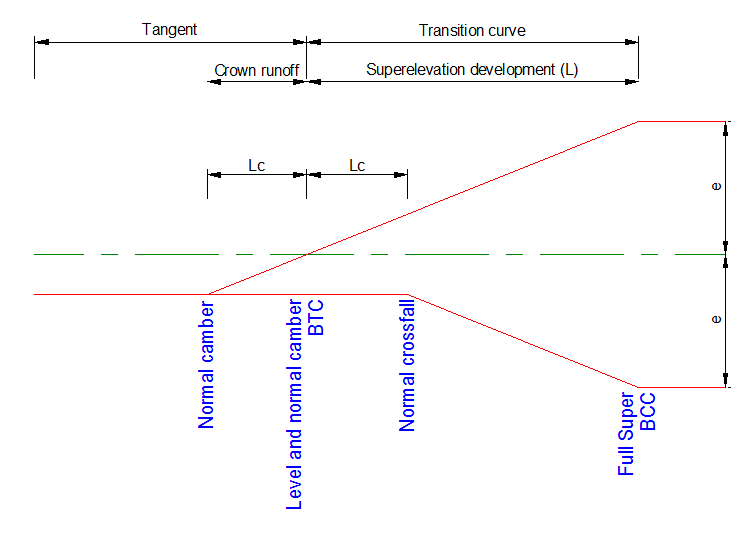
When no transition curve precedes a circular curve, two-thirds of the full superelevation (e) will be achieved on the preceding tangent and the remaining one-third in the circular curve.
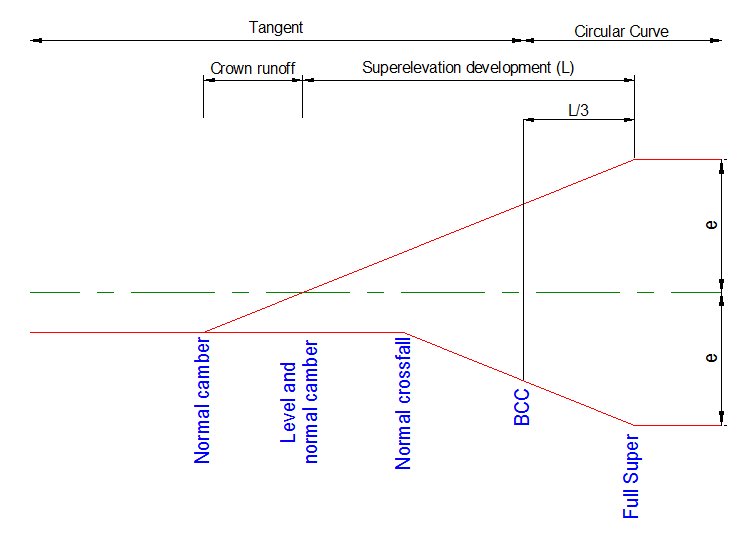
A reversal of horizontal alignment should include a length of connecting tangents, or a section of equal length including spiral curves. The distance between circular curves is dictated by the requirements of superelevation development.
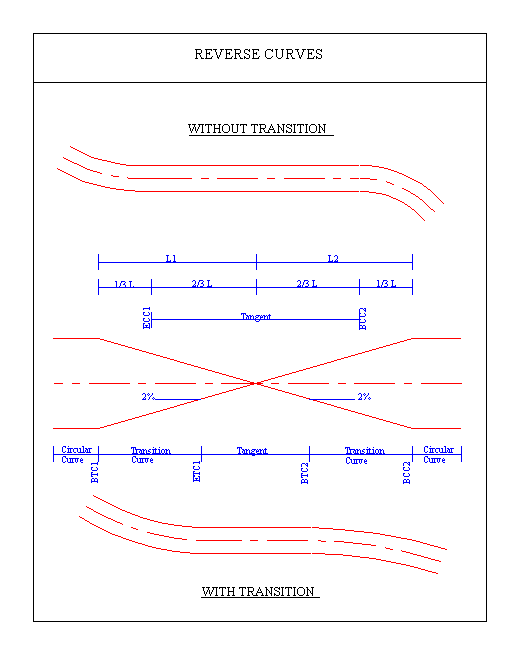
The tangent length between two successive curves that form a broken-back curve should not be less than the Min Tangent Length value specified in the Horizontal spread sheet. The rules that apply to broken-back curves will not be applied if the tangent length is greater than the Broken Back Max Tangent value specified in the Design Criteria. The connecting tangent will have a single cross-fall as displayed in the figure below.
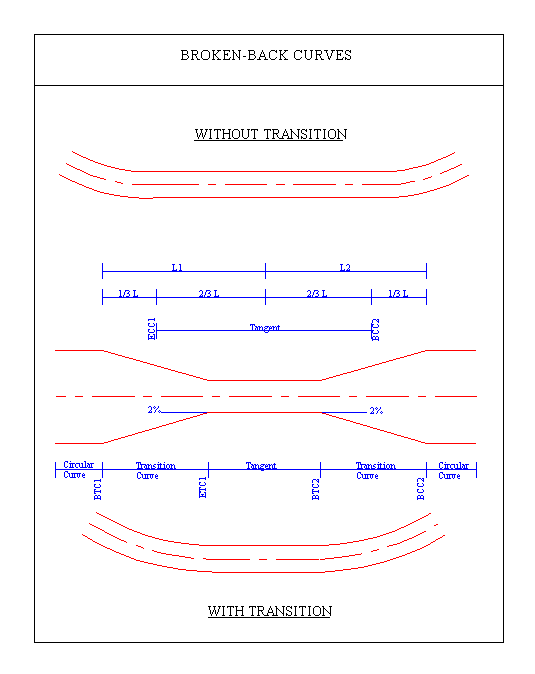
M is the minimum run-off length as specified in the Super spreadsheet of Design Criteria. The development length between the two curves will always be at least M. Civil Designer applies either Case 1 or Case 2, depending on the length of the first circular curve. If this length is less than CT, it applies Case 1. If not, it applies Case 2. CT is the value specified in the Compound Curve L column of the Super spreadsheet in the Design Criteria.
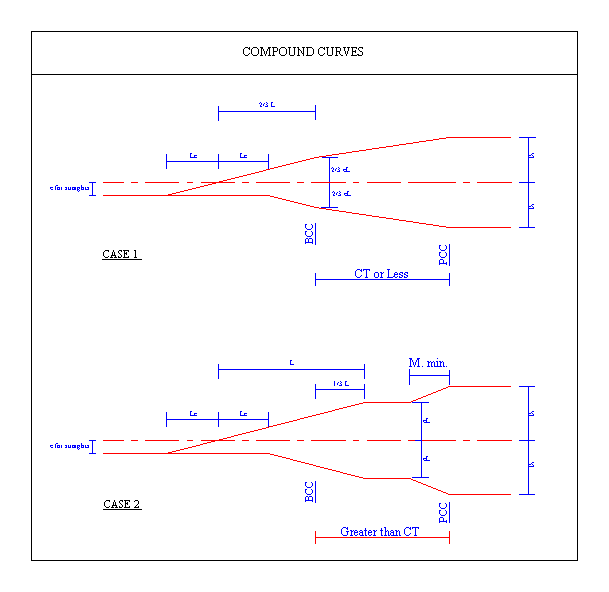
The development method that Civil Designer uses during edge level generation can be set in the Design Criteria to TRH Development Method or Not TRH Development Method.
When superelevation development starts by leaving a crested road (normal camber condition), the outside carriageway starts developing to a positive crossfall, equal to the crossfall of the inside carriageway. During this period, the inside carriageway will not change. The superelevation will then be at a normal camber condition at distance 2 x Lc from the end of the crested road. From here, both carriageways proceed towards the maximum superelevation. The same process is followed when leading out of the curve.
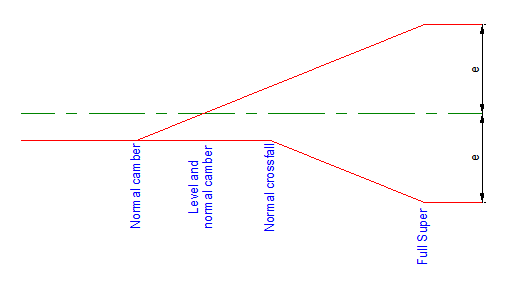
Superelevation of both left and right-hand side carriageways starts developing as soon as the road leaves the crested road (normal camber condition). Both carriageways develop individually towards the maximum superelevation.
